Sengoku period戦国期
The Jajima Castle as a strategic base for maritime transport
海上交通の要所「蛇島城」

Illustration of the Jajima Castle: Reproduced based on the Kyoto Prefecture Medieval
Castle Ruins Survey Report - Tango Edition.
蛇島城図版=京都府中世城館跡調査報告書・丹後編より転載
In the 16th century, a mountain castle was built on the Jajima Island. It was a
"sea castle" controlling maritime transport. According to the literature, the castle had kuruwa
(a zone divided by earthworks, stonewalls and moats inside and outside the castle) in the
southern flat land where lookout posts were installed. The castle had a three-tiered main
tower.
中世の時代、蛇島には山城が築かれた。いわば水運を押さえる「海城」。文献によると、島の南側には見張り台などを建てるため平坦地の曲輪(くるわ)が残り、三段の主郭部から成る「蛇島城」があった。
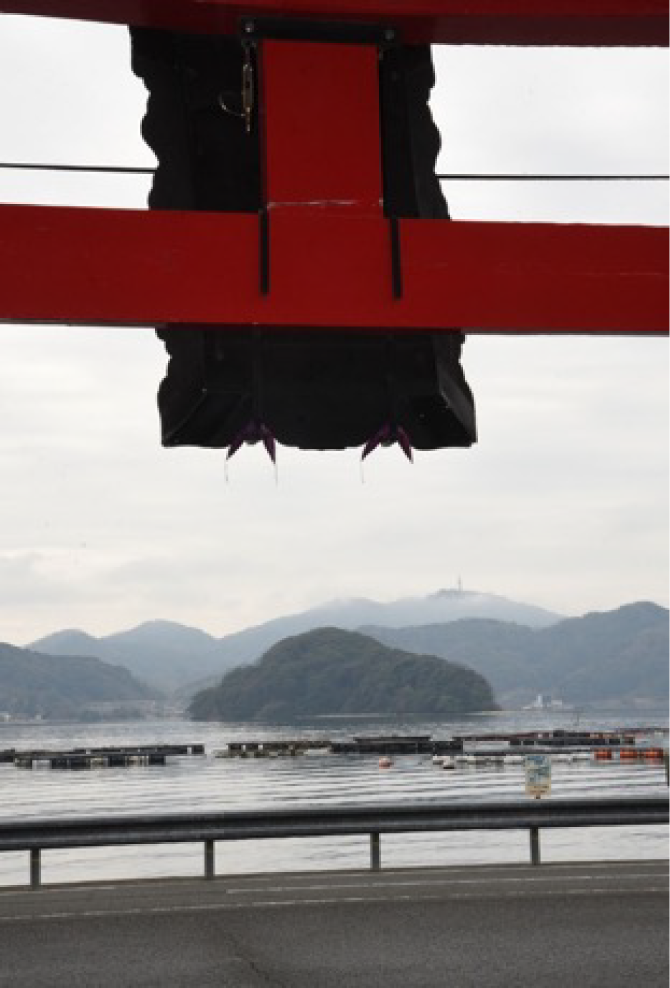
The Jajima Island seen from a village of the Sabaka district
佐波賀地区の集落から望む蛇島
The island was named from a legend of a large snake that crossed the sea and did
evil deeds night after night and that the priest of Unmonji Temple on the opposite bank fought
with the snake and terminated it.
島の名は大昔、夜な夜な海を渡ってきて悪さをする大蛇に悩まされ、対岸にある雲門寺の住職が大蛇を退治したという伝説に由来する。
The Jajima Island was a center of the Wakasa Bay maritime transport from the
Sengoku period. The island transformed after the estaliblishment of the Navy 's base at Higashi
Maizuru in 1901.
戦国の世から若狭湾の海上交通を牛耳る要所であった蛇島。1901年、東舞鶴に海軍の鎮守府が設置されたことで変貌する。
Taisho period大正期
Navy built a gasoline warehouse
海軍がガソリン倉庫建造
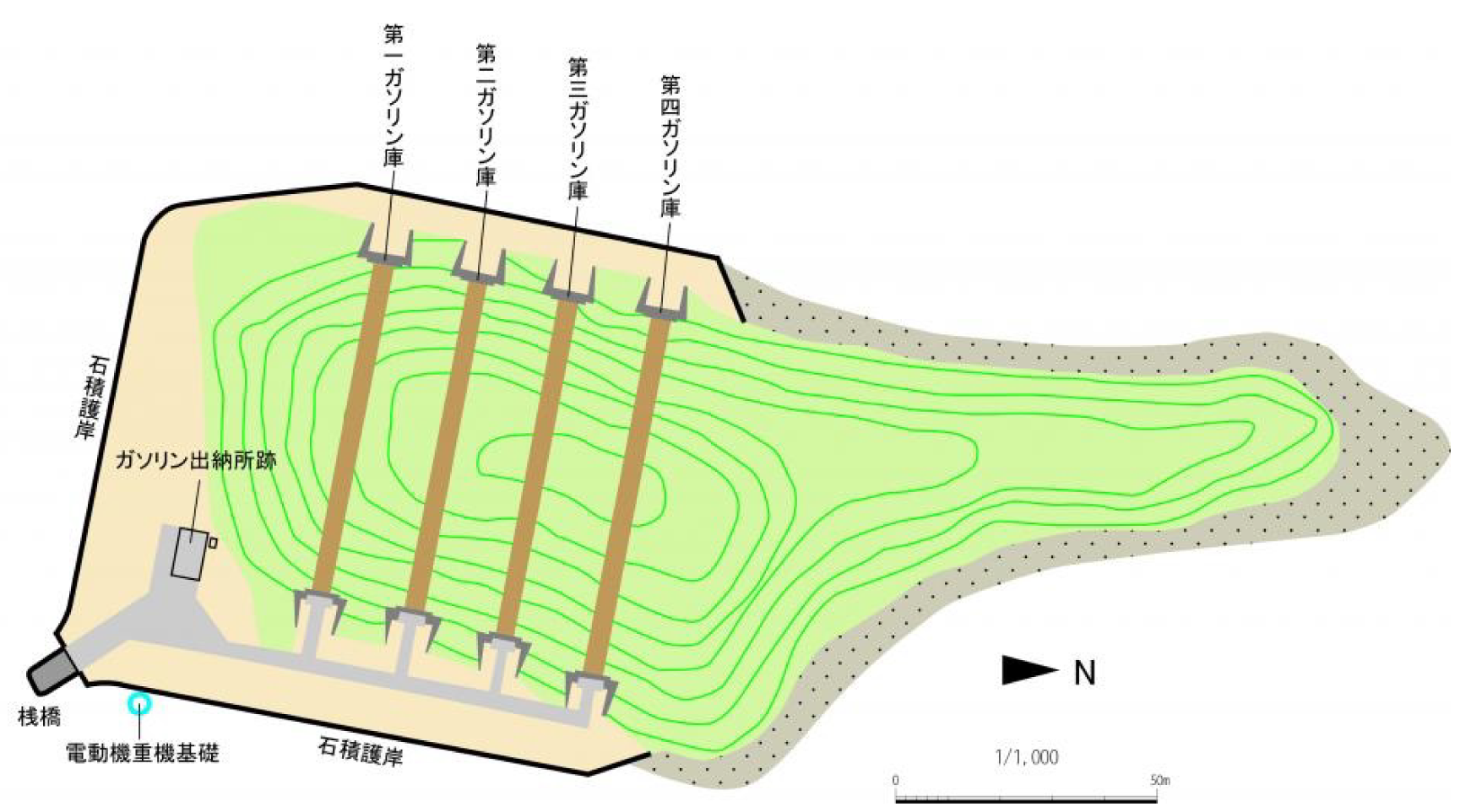
By courtesy of Maizuru City
舞鶴市提供
Military facilities were built in the area between Naka Maizuru and Higashi Maizuru
then. The Navy purchased the Jajima Island in 1916 and made the island off-limits. In 1922, four
tunnel-shaped storages were built as the gasoline warehouse to store highly volatile gasoline
separately.
当時、中舞鶴から東舞鶴にかけて軍事施設が建設された。蛇島は1916年に海軍が買い上げ、立ち入りが禁じられた。1922年4本のトンネル倉庫を建造。揮発性の高いガソリンを保管し、隔離する場所だった。
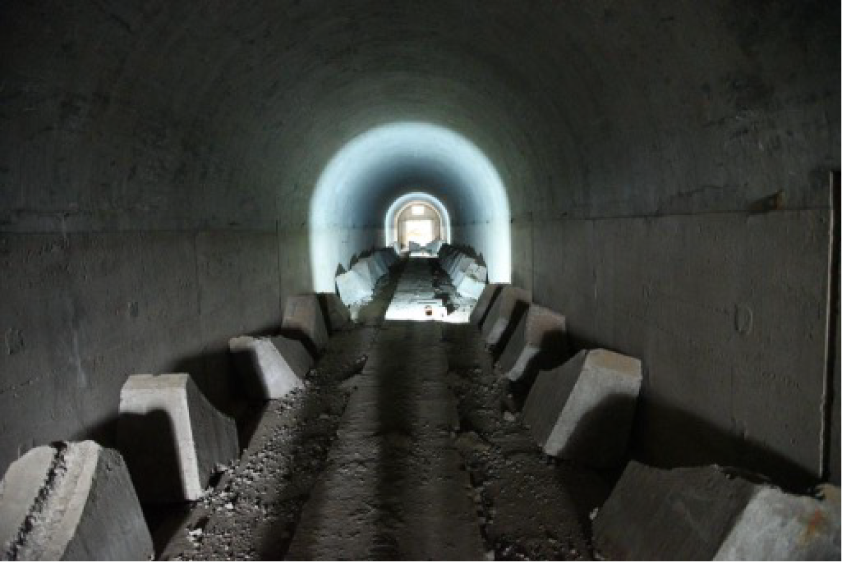
A tunnel-shaped storage remained in a good condition after more than 100
years
100年前に建造されたとは思えないほど良好な状態で残るトンネル倉庫
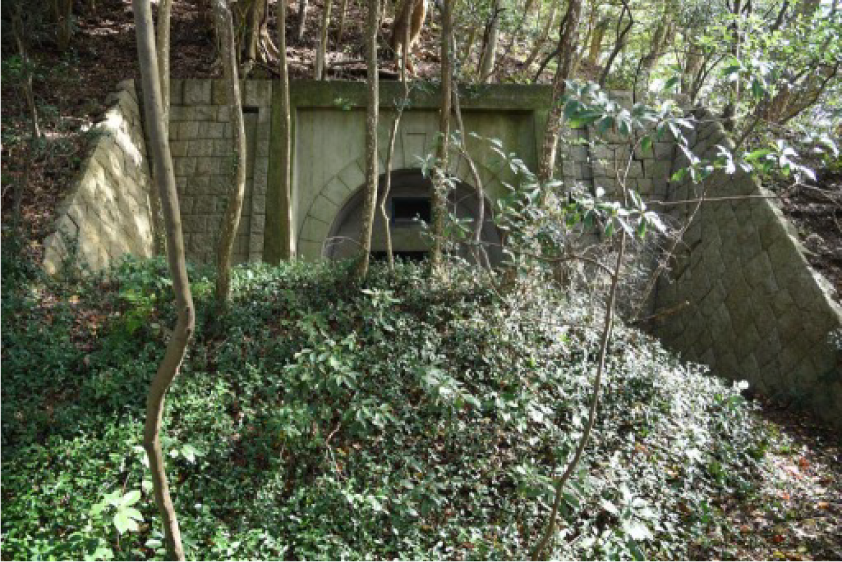
Earthwork built at the entrance of the tunnel.
トンネル入り口には土塁が築かれている。
The tunnel arch tops are made of brick. Some tunnels retain the arched concrete
object used to fix gas tanks in place.
トンネル上部のアーチ部はれんが造りで、ガソリンタンクを固定していたアーチ状のコンクリートが残るトンネルもある。
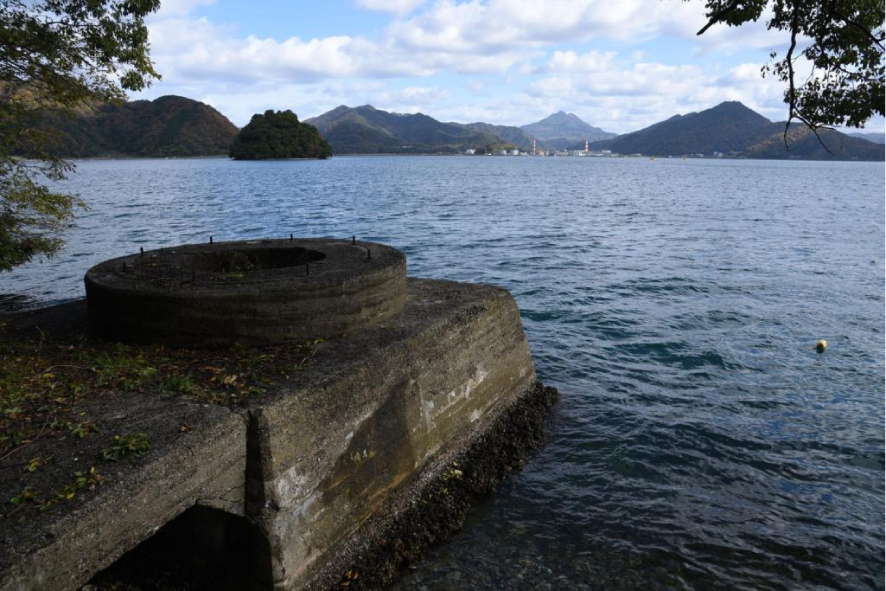
Ruin of circle-shaped crane foundation
かつてクレーンがあった円形の基礎
The island has remains of masonry seawalls for ships and the foundations of
electric hoists (cranes), indicating the infrastructure technology at the time.
島には船が着く石積みの護岸や電動起重機(クレーン)の基礎などの遺構も残っており、インフラ技術を伝えている。
Modern period現代
Designated as a "Japan Heritage" for tourism utilization
国の「日本遺産」に 観光活用へ
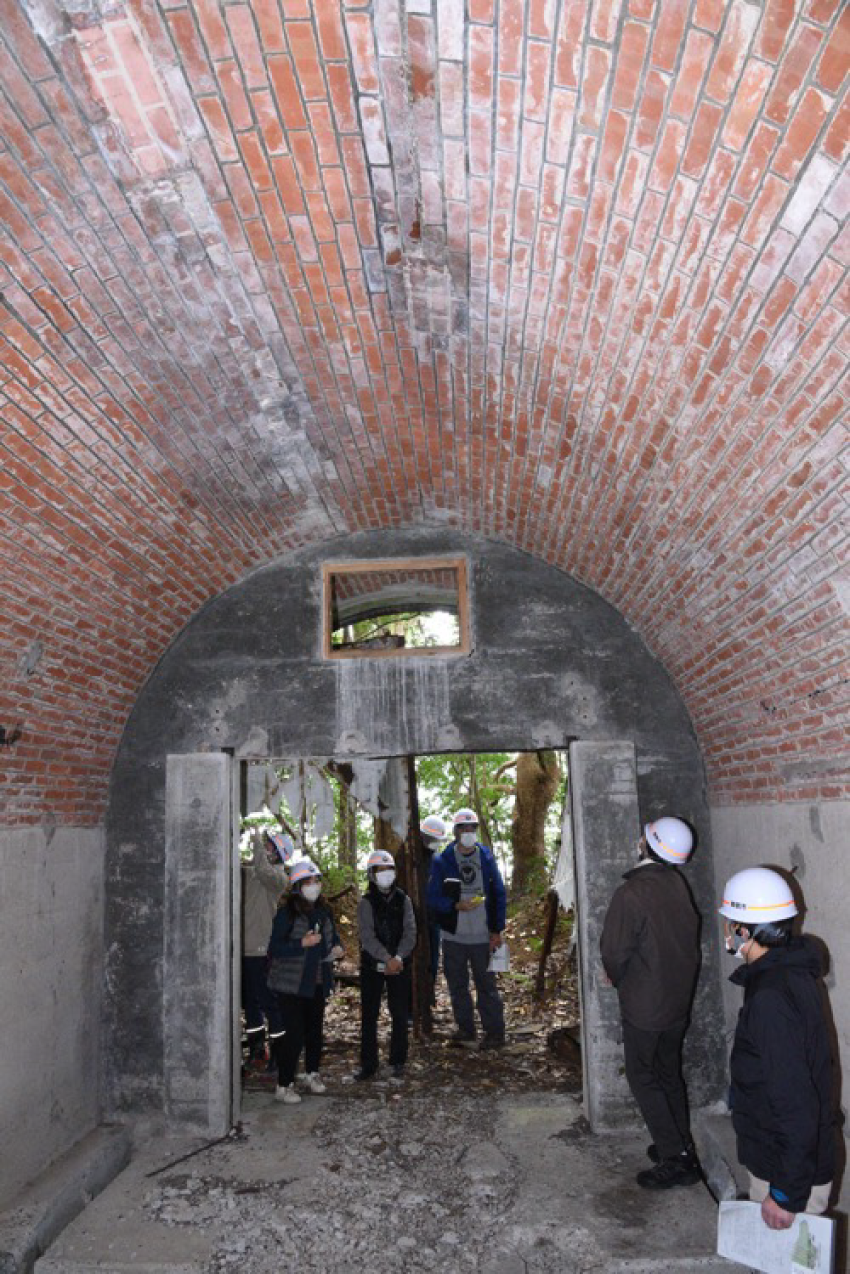
Public tour guests visiting the site
公開ツアーに参加する見学者ら
In June 2020, the Agency for Cultural Affairs designated the Jajima Island as a
"Japan Heritage," recognizing it as a valuable infrastructure facility that supported the naval
port.
2020年6月、軍港を支えた貴重なインフラ施設として文化庁の「日本遺産」に追加認定された。
In the fall of 2022, the Jajima Island was made open to the public for the first
time to explore its potential as a tourist destination, and it finally came into the light of
day.
2022年秋には観光地としての可能性を探るため、初めて一般公開され、日の目をみることになった。

